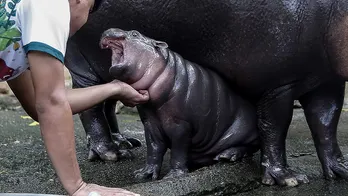On the Coast of Greenland, Early Arctic Spring Has Been Replaced by Seasonal Extremes, New Research Shows
For most of the year, snow and ice cover the Zackenberg research station on the coast of northeast Greenland. But every spring the temperatures rise and the ice melts to uncover a landscape of flowering plants, insects and migratory birds that arrive from all over the world to nest through a brief arctic summer.
Since 1995, researchers have arrived each spring to watch and monitor these events as the short spring and summer season unfolds. In a rapidly warming arctic the field of phenology, which examines how the seasons drive the life cycle of plants and animals, helps scientists understand how physical and biological seasonal events shift as climate change progresses.
In a paper published in 2007, scientists analyzed a decade of phenological measurements collected from Zackenberg and found that arctic springs were beginning earlier. The rising temperatures and earlier snowmelt drove back the time that plants and animals started to emerge and arrive after winter.
New research published on Wednesday in Current Biology looks at the full 25 years of phenological data, covering a period from 1996 to 2020. The results indicate that this previously reported pattern is all but nonexistent. The study determined, instead, that earlier arctic springs are being replaced by extreme yearly variability in the timing of physical and biological measurements.
Evidence suggests that many organisms in this arctic environment are reaching the limit of their ability to respond to climate variability. The different species often rely on each other for survival so changes in the timing of different seasonal events could steer organisms off track, leading to an ecological network out of sync with itself, the research suggests.
“Now we have gone from a system where everything shifts predictably earlier to a system where there’s no way to know what next year will be like, based on what this year is,” Tomas Roslin, a professor at the Swedish University of Agricultural Sciences and an author on the paper, said.
By the 1990s it became apparent that climate change was occurring and that northeast Greenland, where Zackenberg is located, might be warming faster than other areas. So in 1996 the Danish government started to track both physical and biological metrics in Zackenberg to establish a baseline and monitor how they change over time.
Niels Martin Schmidt, a professor at Aarhus university and the lead author of the paper, read a newspaper article about Zackenberg shortly after the monitoring program began in 1995 and decided to do his masters degree research there. He has been involved in the program ever since and today is in charge of biological monitoring.
“It was at an extremely exciting place and one of the only places in the high north where you can actually go and work the entire ecosystem,” Schmidt said. “Because as a biologist, it’s not enough just to know the biology, you also need to understand the entire web of interactions all these species are embedded into.”
Zackenberg houses seasoned field technicians who track the timing of physical and biological events that are influenced by seasonal changes. In addition to tracking physical changes such as temperature and snow cover, these technicians also track information relevant to the phenology of plants and animals in the area.
Researchers wanted to make sure they could consistently record uniform data on different types of plants and animals over a long period of time. So they identified the most abundant species and established permanent research plots. Field technicians spend weeks each summer estimating when migratory birds lay their eggs and counting the number of open flower buds and insects caught in traps using the same methods established in the 1990s.
“It’s all following standardized protocols,” Toke Høye, a professor in the department of ecoscience at Aarhus University and an author on the paper, said. “And I think that’s part of the valuable aspect of this data that over the course of 25 years, every week of the growing season, these field workers have been out there following the same protocol.”
Both Schmidt and Høye were authors on a paper published in 2007 which looked at the first 10 years of Zackenberg data and found arctic spring was occurring earlier each year. The temperatures rose and the snow melted earlier, and the plants, insects and birds largely adjusted their activity accordingly. But they knew that it wasn’t likely for spring in Zackenberg to continue to move much earlier each year.
Now, instead of seeing a trend of directional change towards an earlier spring, there is no real trend because the ecosystem varies so much year to year. The climate is generally warmer, but there is no directional change in temperature or snow cover.
It’s easy to assume that no directional trends in the timing of arctic spring would be a good thing that indicates the ecosystem is stable, when really “it’s from one extreme to the other from year to year. And that’s really pushing these organisms to the limit,” Schmidt said.
The timing of snowmelt is not just related to the temperature, it also depends on how much snow falls each winter, Høye said. Variability in snowmelt leads to variations in when plants and animals start their normal spring behaviors and respond to seasonal changes in temperature. As the arctic enters spring, many plants and insects can only emerge once the snow recedes.
In 2018, extreme snowfall led to snow cover persisting into July. When this happened, insects and flowering plants could not emerge until the snow receded, which left the migratory birds without food. Schmidt said that in one year there was “a complete collapse of all reproduction in the area.”
The ecosystem is used to variability, but if instances like what happened in 2018 happen more frequently it can become difficult for the plants and animals to bounce back like they normally would, Schmidt said.
When the researchers looked at the beginning, middle and end periods separately, they found some plant and insect species are now not as sensitive to temperature cues. The leveling off in some species’ responses to temperature could spell trouble for the rest of the ecosystem because species need to act in sync with each other to survive.
Robert Hollister, a professor of biology at Grand Valley State University in Michigan who was not involved in the study, said Zackenberg is a respected long term monitoring site. He’s been monitoring plant phenology at a research station in Utqiaġvik, Alaska since the 1990s. Given his experience, he said it makes sense that some of the arctic plants included in the study are not responding to seasonal temperature cues as expected.
“The fact is that they all depend on each other because most of the plants are insect pollinated,” Roslin said. “All of the birds feed on insects. That’s the only reason why they fly over the entire globe to nest in that weird place. The spiders eat the insects, etc.”
Cory Williams, a professor of biology at Colorado State University who was not involved in the study, said the dataset is quite robust given the number of species the authors are tracking. He said the paper is interesting in how it shows that some species reach limits in their ability to respond to higher temperatures. However, he said more data is necessary to confirm if certain organisms are in fact reaching the limits of their ability to respond to seasonal cues.
Long term monitoring is challenging and costly, Høye said, but it wouldn’t be possible to understand the dynamics of arctic systems without it.
Roslin said there are no other long term datasets as comprehensive as the data from Zackenberg. Because of this, it’s hard to assess if these same phenological responses are occurring across other areas in the high arctic.
“In terms of starting long term monitoring in other sites, today would be a good day to do so, and tomorrow too.” Roslin said. “So we had better get started.”
Disclaimer: The copyright of this article belongs to the original author. Reposting this article is solely for the purpose of information dissemination and does not constitute any investment advice. If there is any infringement, please contact us immediately. We will make corrections or deletions as necessary. Thank you.







